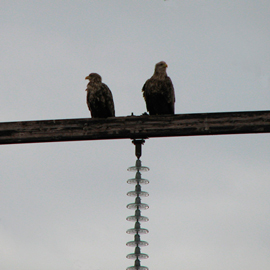Power transmission and wildlife

Transmission lines may have an ecological impact on birds through collisions and electrocution; whereby the latter may e.g. result in power outages and thus also have an economic impact. Power-line corridors, which constitute an economic problem tying up huge land areas e.g. for the forestry sector, may at the same time constitute habitat which could benefit some species (e.g. browsing habitat for ungulates, hunting habitat for edge-tolerant carnivores) where others may suffer (barrier for e.g. forest-dwelling species). In addition to the link between impacts and economic costs; environmental impacts may also be used to channel opposition and concern to developments.
CEDREN has addressed these questions through the OPTIPOL project (Optimal design and routing of power lines; ecological, technical and economic perspectives). The OPTIPOL rationale is based on the belief that the negative effects of electricity transmission and distribution can be reduced with respect to birds and mammals. To develop effective mitigating measures, e.g. to reduce the number of birds colliding with the overhead wires or reduce the avoidance effect for ungulates require a close co-operation between ecologists and engineers, dealing with electricity transmission. Supporting structures for power lines and a diversity of specific constructions found within the Norwegian grid system must be considered carefully in order to safeguard the stability of energy supply to the consumer and/or violate safety regulations.
Photo: Kjetil Bevanger / NINA.